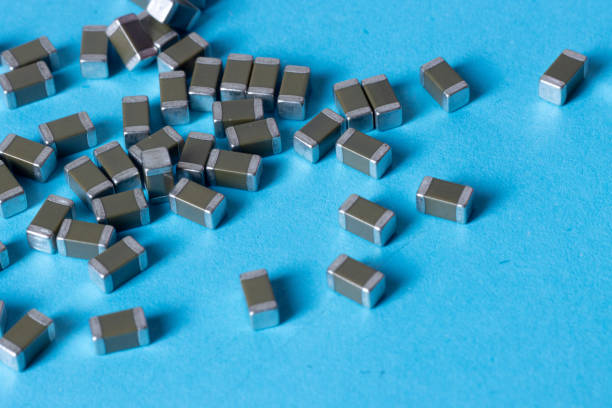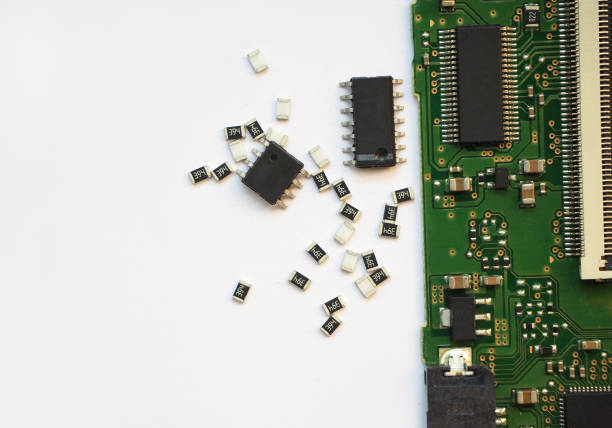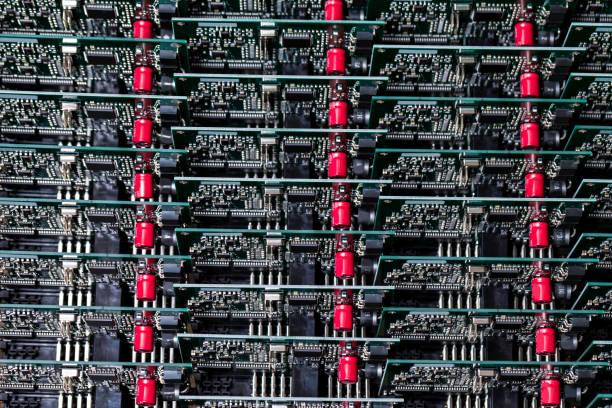Content Menu
● Understanding SMT Nozzle Types
● Key Considerations for Selecting SMT Nozzles
>> 1. Component Size and Shape
>> 2. Nozzle Material
>> 3. Nozzle Tip Design
>> 4. Vacuum Pressure
● Best SMT Nozzle Types for Fine Pitch Components
>> - Juki Nozzle 506
>> - Juki Nozzle 507
>> - Custom Micro Nozzles
● Challenges in Fine Pitch Component Placement
● Technological Advancements in SMT Nozzle Design
● Nozzle Selection Process
● Maintenance Tips for SMT Nozzles
● Conclusion
● FAQ
>> 1. What are the different types of SMT nozzles available?
>> 2. How do I choose the right SMT nozzle?
>> 3. What materials are commonly used for SMT nozzles?
>> 4. Why is alignment important in fine pitch component placement?
>> 5. What advancements are being made in SMT nozzle technology?
● Citations:
In the world of Surface Mount Technology (SMT), the choice of nozzle plays a crucial role in ensuring the accuracy and efficiency of component placement. As electronic devices become more compact and complex, the demand for fine pitch components—those with lead pitches smaller than 1.27 mm—has increased significantly. This article explores the various types of SMT nozzles suitable for fine pitch components, their characteristics, and how to select the best nozzle for specific applications.

Understanding SMT Nozzle Types
SMT nozzles are essential components of pick-and-place machines, which are used to automate the assembly of electronic circuits. The choice of nozzle can significantly affect the performance of these machines, particularly when dealing with fine pitch components. Here are some common types of SMT nozzles:
- Standard Nozzles: Designed for general-purpose applications, these nozzles can handle a variety of component sizes and shapes. They are typically used for components like resistors and capacitors.
- Fine Pitch Nozzles: Specifically engineered for placing fine pitch components such as Quad Flat Packages (QFPs) and Ball Grid Arrays (BGAs). These nozzles have a smaller tip diameter to facilitate accurate placement in tight spaces.
- Micro Nozzles: These nozzles are even smaller than fine pitch nozzles and are used for ultra-fine pitch components. They provide precise control needed for densely packed boards.
- Custom Nozzles: Tailored to meet specific requirements, custom nozzles can be designed based on the unique dimensions and shapes of particular components. This flexibility is crucial in high-mix production environments.
Key Considerations for Selecting SMT Nozzles
When selecting an SMT nozzle for fine pitch components, several factors must be considered:
1. Component Size and Shape
The size and shape of the component dictate the type of nozzle required. For instance, a nozzle designed for a 0201 component will differ from one meant for a 0805 component.
2. Nozzle Material
Different materials offer various advantages:
- Tungsten Steel: Durable but may discolor over time.
- Ceramic: Offers excellent durability without discoloration but is brittle.
- Diamond Steel: Extremely durable and does not discolor; however, it is more expensive.
- Plastic: Cost-effective but less durable; suitable for short-term use or less critical applications.
3. Nozzle Tip Design
The design of the nozzle tip can influence its performance:
- Round Tips: Commonly used for standard applications.
- Flat Tips: Better suited for larger surface areas or specific geometries.
- V-Shaped Tips: Ideal for components with specific lead configurations.
4. Vacuum Pressure
The suction strength of the nozzle is critical, especially when handling delicate components. A higher vacuum pressure may be necessary for smaller parts to ensure they are securely held during placement.
Best SMT Nozzle Types for Fine Pitch Components
For fine pitch applications, certain nozzle types stand out due to their design and functionality:
- Juki Nozzle 506
This nozzle is specialized for fine pitch components such as QFPs and BGAs. It features an advanced design that minimizes damage risk to delicate leads while ensuring precise alignment during placement.
- Juki Nozzle 507
Versatile and capable of handling irregularly shaped components, this nozzle provides flexibility in production lines that deal with various component types.

- Custom Micro Nozzles
For ultra-fine pitch applications (0.4 mm or less), custom micro nozzles can be designed to fit specific component profiles, ensuring optimal performance without compromising accuracy.
Challenges in Fine Pitch Component Placement
Placing fine pitch components presents unique challenges:
- Alignment Accuracy: The smaller the pitch, the more critical alignment becomes. Vision systems integrated into pick-and-place machines help ensure precise placement by compensating for any variations in component positioning.
- Interference with Adjacent Components: As pitches decrease, the risk of nozzle interference with already placed components increases. Fine pitch nozzles must be designed to minimize protrusion beyond the edges of the component being placed.
Technological Advancements in SMT Nozzle Design
Recent advancements in technology have led to improved designs and materials for SMT nozzles:
- Enhanced Materials: New composite materials are being developed that combine durability with lightweight properties, making them ideal for high-speed operations.
- Smart Nozzle Technology: Some manufacturers are now integrating sensors into nozzles that provide real-time feedback on suction strength and alignment, further enhancing placement accuracy.
Nozzle Selection Process
Choosing an appropriate nozzle involves understanding both the technical specifications of your pick-and-place machine and the characteristics of the components you intend to place. The following steps can guide you through this selection process:
1. Identify Component Specifications: Gather detailed information about the dimensions (length, width, height) and shape (flat, cylindrical) of your components.
2. Match Nozzle Type to Component Size: Use a reference chart provided by your machine manufacturer to match your component specifications with suitable nozzle types.
3. Consider Production Volume: If you are running high-volume production, choose nozzles that offer durability and ease of maintenance to minimize downtime.
4. Evaluate Compatibility with Machine Head: Ensure that your selected nozzle is compatible with your pick-and-place machine's head type (e.g., Juki type 5xx).
5. Test Different Nozzle Designs: If possible, conduct tests using different nozzle designs to determine which provides optimal performance in terms of speed and accuracy during actual production runs.
Maintenance Tips for SMT Nozzles
Proper maintenance is essential to ensure long-term performance and reliability of SMT nozzles:
- Regular Cleaning: Accumulated dust or solder paste can impair suction capabilities. Regularly clean nozzles using appropriate solvents or cleaning solutions recommended by manufacturers.
- Inspect for Wear and Tear: Regularly check nozzles for signs of wear or damage. Replace any worn-out nozzles promptly to prevent production issues.
- Calibration Checks: Periodically calibrate your pick-and-place machine to ensure that it operates within specified tolerances, particularly after replacing nozzles or making adjustments.
- Store Properly: When not in use, store nozzles in protective cases or containers to prevent physical damage or contamination from environmental factors.
Conclusion
Choosing the best SMT nozzle for fine pitch components is crucial in optimizing production efficiency and ensuring high-quality assembly in electronic manufacturing. Factors such as component size, material properties, tip design, and vacuum pressure all play significant roles in this decision-making process. With advancements in technology and an increasing variety of nozzle types available, manufacturers can achieve greater precision and reliability in their assembly processes.
As electronic devices continue to evolve towards miniaturization and increased functional density, understanding SMT nozzle types will remain essential for successful manufacturing operations.

FAQ
1. What are the different types of SMT nozzles available?
SMT nozzles come in various types including standard nozzles, fine pitch nozzles, micro nozzles, and custom-designed nozzles tailored to specific component shapes.
2. How do I choose the right SMT nozzle?
Selecting the right SMT nozzle involves considering factors such as component size and shape, material properties, tip design, and required vacuum pressure.
3. What materials are commonly used for SMT nozzles?
Common materials include tungsten steel, ceramic, diamond steel, and plastic. Each material has its advantages regarding durability and cost-effectiveness.
4. Why is alignment important in fine pitch component placement?
Alignment is critical because even minor misalignments can lead to placement defects or damage to delicate leads on fine pitch components.
5. What advancements are being made in SMT nozzle technology?
Recent advancements include enhanced materials that improve durability while reducing weight and smart nozzle technology that integrates sensors for real-time feedback on performance metrics.
Citations:
[1] https://www.itechsmt.com/blogs/news/how-to-choose-smt-nozzle-for-your-pick-and-place-machine
[2] https://smt.fuji.co.jp/en/topics/3108
[3] https://pubs.aip.org/aip/acp/article/2607/1/120004/2892462/Design-of-nozzles-for-surface-mount-technologies
[4] https://www.tokyoseisakusho.co.jp/en/product/electro.html
[5] http://avipre.com/products/smt&tht/juki/Juki%20-%20Nozzle%20Catalogue-Rev-C3.pdf
[6] https://smt.fuji.co.jp/en/topics/2858
[7] https://pcbasupplies.com/midas-a12-nozzle-0-80mm-id-spring-tool/
[8] https://invsmt.com/juki-nozzle-smt-500/
[9] https://smtnet.com/library/files/upload/preventative-maintenance-smt.pdf
[10] https://silmantech.com/what-is-the-detailed-explanation-of-smt-nozzle-structure-principle/




















